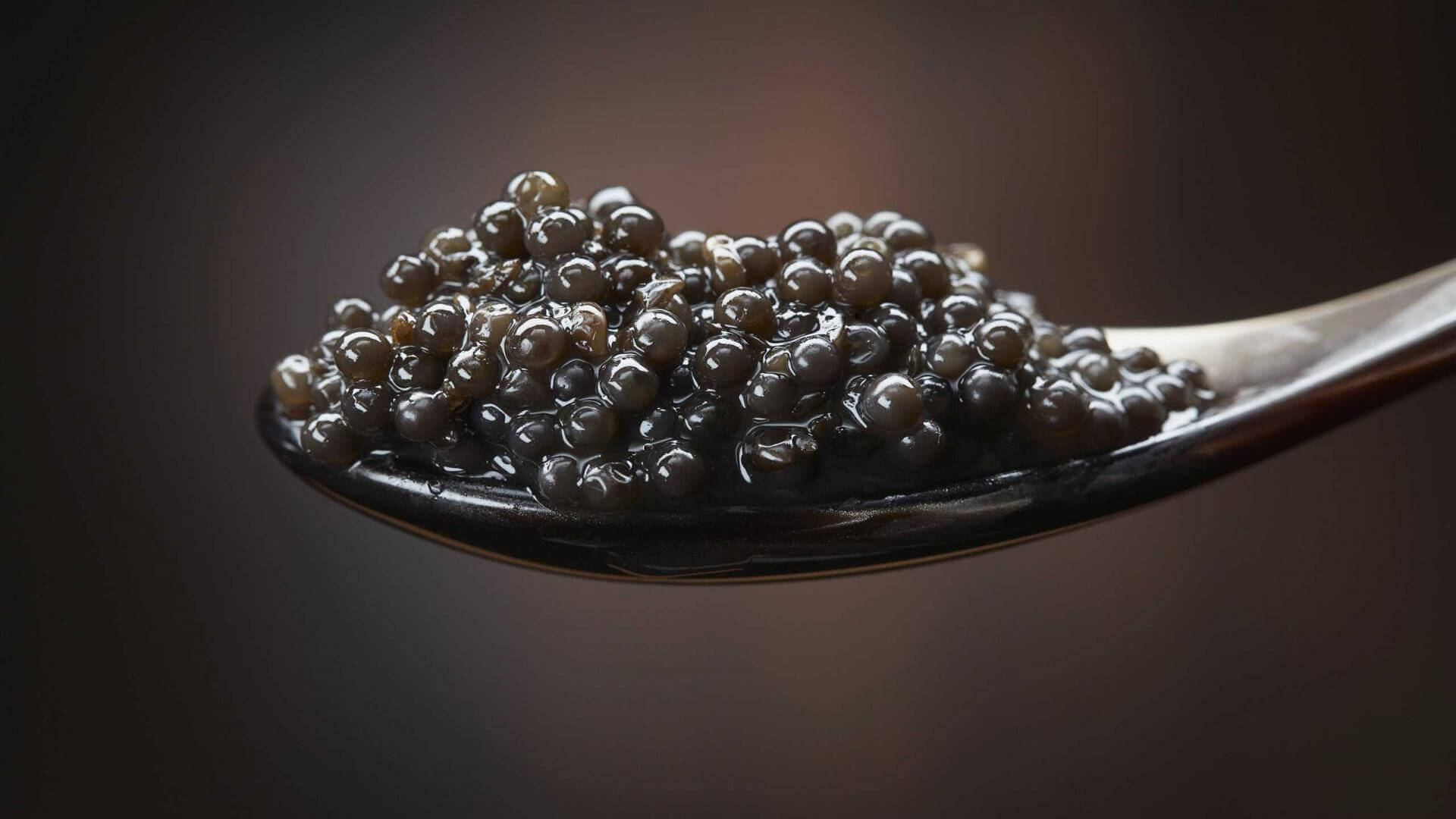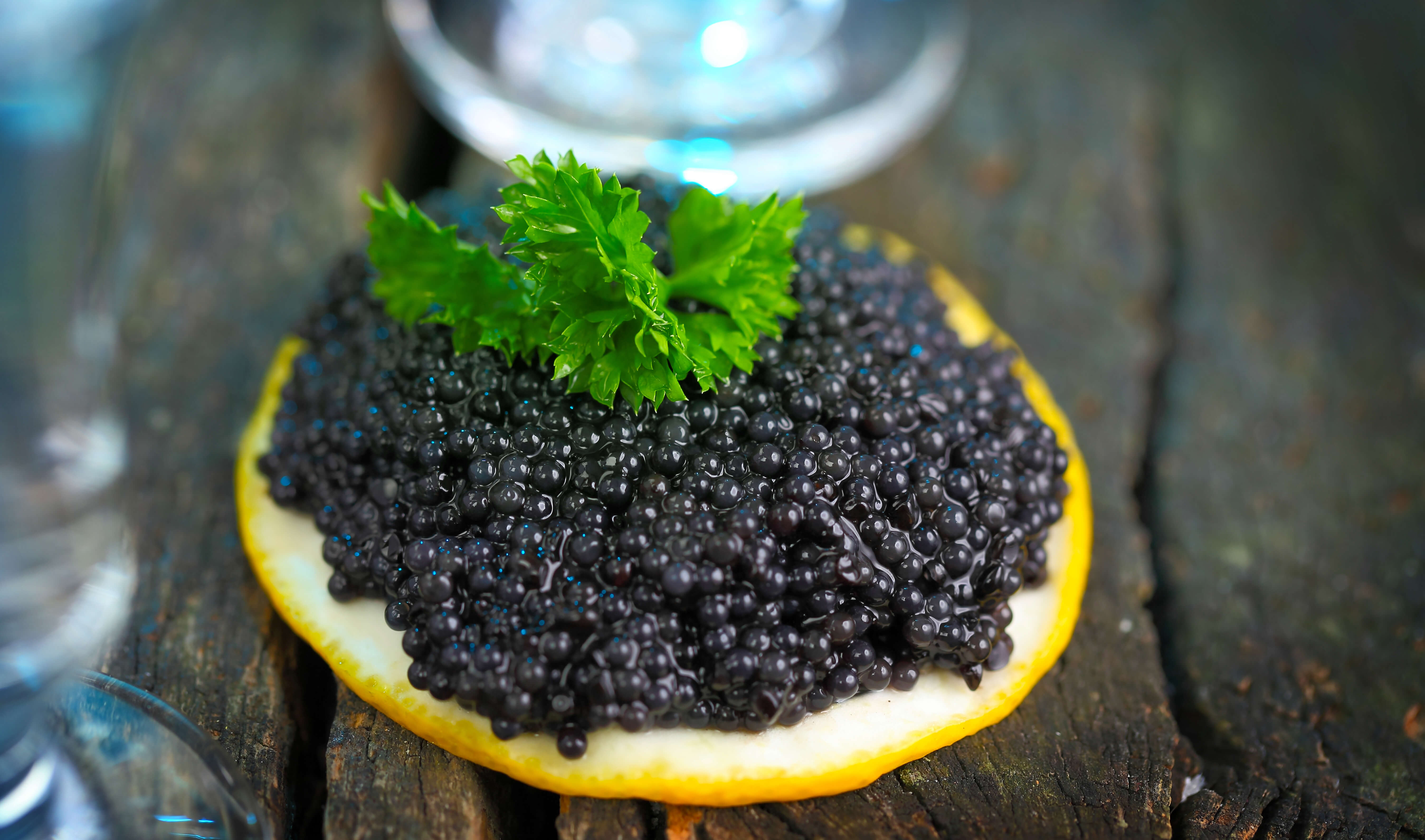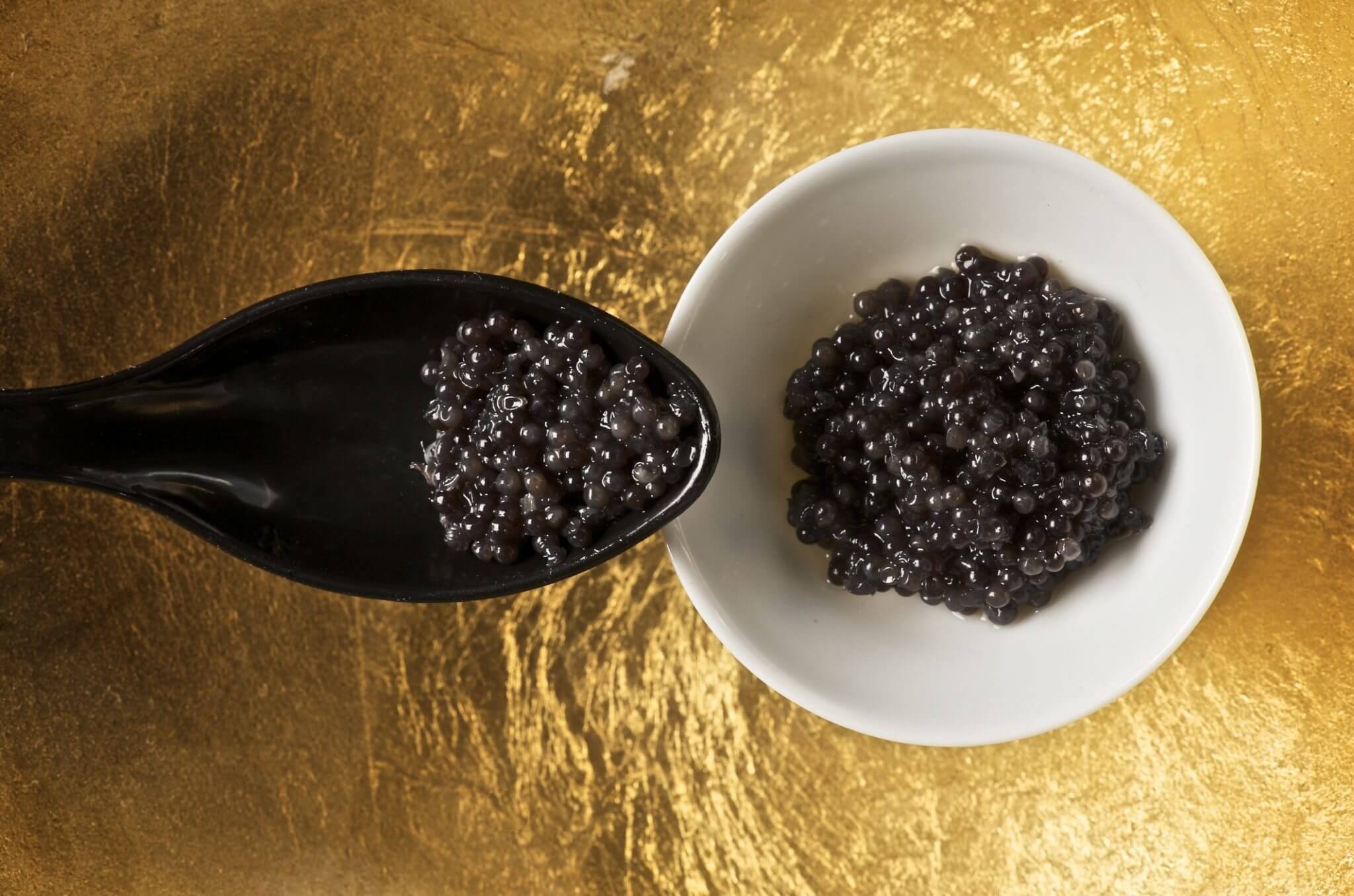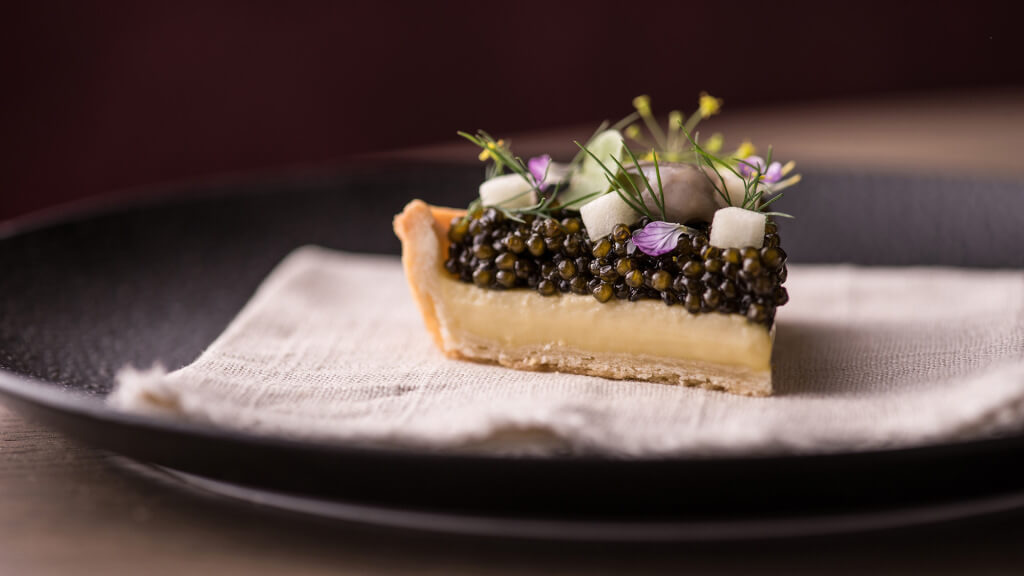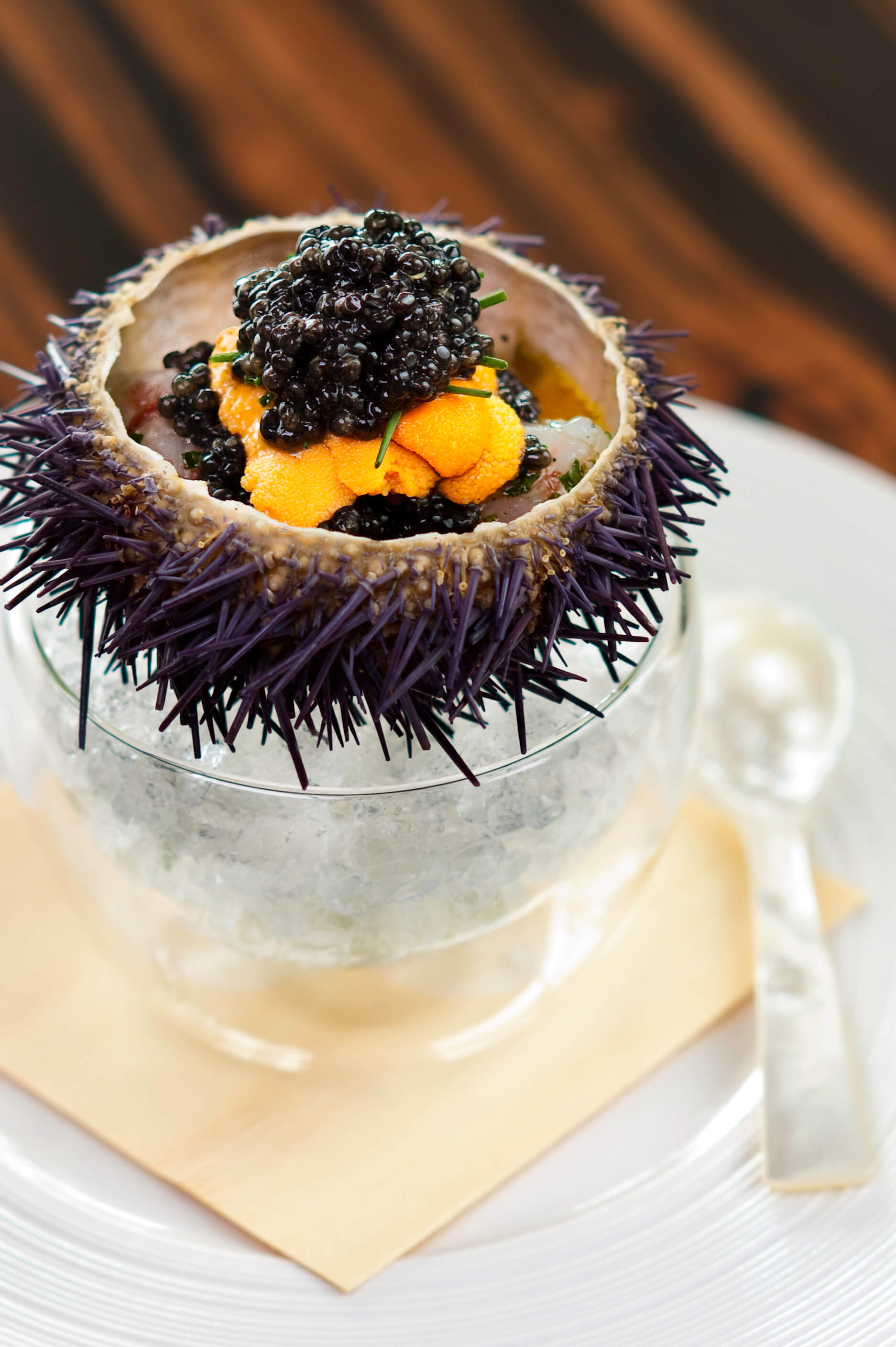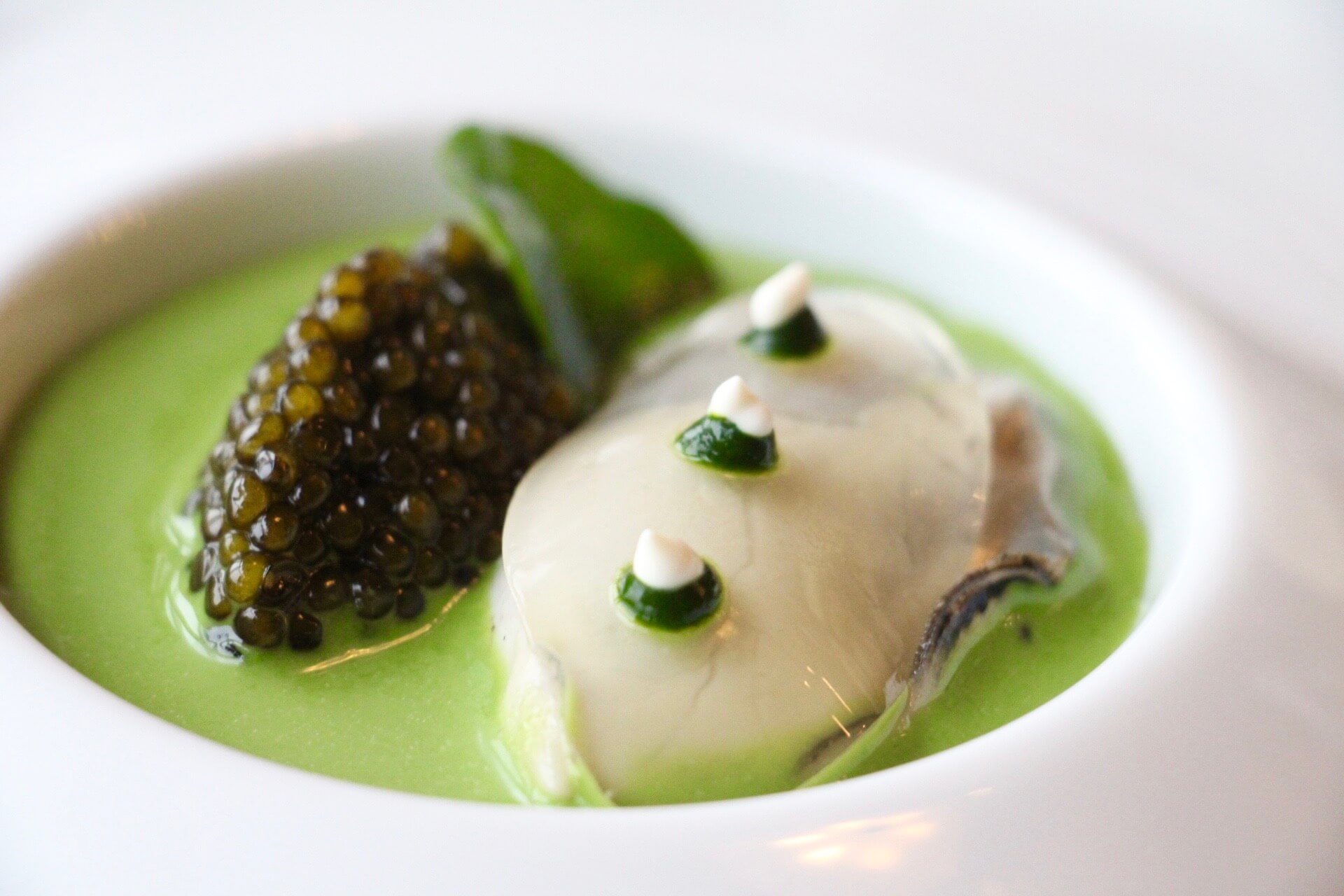The number one global source for the most luxurious, rare, and delicate food in existence; Iran is the leader in the breeding, production, and export of sustainable Caspian Sea caviar. For thousands of years, Iran has been producing delectable, gold-standard caviar, beloved by Russian Tsars, famous chefs, and connoisseurs the world over.
Often described as a mythical & pre-historic delicacy originating from the Caspian Sea, Caviar is the stuff of legend, an established and indulgent product beloved by many for its complex, layered taste yet distinctive flavour. Long-since considered one of the world’s most desirable resources, and the most sought-after fine food, caviar continues to hold just as much value as it always has; if not more. When it comes to creating that delicacy, Iran is at the top of the hierarchy.
Caviar production in Iran
Iran’s stellar reputation for the production of exemplary caviar is world-renowned. Iran was, and still is, seen as the only Caspian state that was internationally certified as not driving its local sturgeon population to extinction – its Fisheries ensure that by stocking the sea with millions of baby sturgeon and keeping careful catch records, they will stabilize the sturgeon population in Caspian Sea waters. https://www.cites.org/eng/news/pr/2004/040903_caviar.shtml
This pristine reputation leads to products that exceed expectations for quality and taste. Combined with Iran’s fisheries’ excellent ethical reputation, there’s a reason why it is the number one source for the most expensive foodstuff in existence.
In modern times, for those who love this expensive food item, the conditions and waters in which the sturgeon is grown is now just as important as the caviar itself. Iran’s sturgeon farms use natural waters from the Caspian Sea, unlike farms in Europe. The authentic and natural features of the pure Caspian Sea waters are the natural habitat of sturgeon fish and thus an excellent ecosystem that ensure the quality of the most exquisite delicacy.
Iran’s considerable hold on the market, combined with its luxurious and unique recipes, have resulted in caviar that’s the closest to being wild as can legally is permitted. The quality of Iranian caviar has only improved thanks to its stringent regulation by the Iranian government, and its global reputation, surpassing its rivals. All while offering the perfect high-end experience to its customers.
Thanks to Iranian caviar’s tried and tested recipes, flawlessly salt-cured fish eggs and compelling commitment to ethical breeding, there are many reasons to choose this exemplary delicacy over everything else on the market. Its location by the nutrient-rich waters of the Caspian Sea is just one of the answers to why Iranian caviar is a world apart and is designed specifically for the discerning palettes it attracts according to the LA Times (source).
Ancient history of Caviar
Caviar was used to treat medical ailments and enhance vitality by the ancient Persians.
Source: [Fletcher, Nichola; Caviar: A Global History; 2010: ISBN-10 :1861896506: page 42]
Pre 20th century
1879 a Russian company was granted the concession for co-invest in the fishing grounds in the Iranian portion of the Caspian Sea
[https://de.zxc.wiki/wiki/Kadscharen]
Source: [Saffron, Inga; “Caviar: The Strange History and Uncertain Future of the World’s Most Coveted Delicacy”; 2002; page 43]
Early 20th century
The Shah of Iran granted the concession to a Russian business to fish in Iran’s territorial waters i.e. the southern shores of the Caspian Sea.
Source: [Saffron, Inga; “Caviar: The Strange History and Uncertain Future of the World’s Most Coveted Delicacy”; 2002; page 43]
1917 post-Russian Revolution
The Shah of Iran cancels the concession to a Russian business after non-payments, and is granted to another Russian business, which subsequently also fails to make payments to Iran. The concession is cancelled and the Shah grants no further ones, opting instead for Iran to make full use of her fishing grounds in her territorial waters.
Source: [Fletcher, Nichola; Caviar: A Global History; 2010: ISBN-10 : 1861896506: page 113-114]
Source: [Saffron, Inga; “Caviar: The Strange History and Uncertain Future of the World’s Most Coveted Delicacy”; 2002; page 44]
1953
February 1953, Iran terminates a fishing concession with the Soviet Union, thereby denying access to sturgeon in the southern Caspian Sea.
Source: [https://www.irannamag.com/en/article/%D8%A7%D8%B2-%DA%AF%D9%86%D8%A7%D9%87%D8%A7%D9%86-%D8%AE%D9%84%DB%8C%D9%84-%D9%85%D9%84%DA%A9%DB%8C%D8%9F/]
Source: [“IRAN ENDS CONCESSION IN CAVIAR TO SOVIET”, Special to THE NEW YORK TIMES. Feb. 1, 1953] https://www.nytimes.com/1953/02/01/archives/iran-ends-concession-in-caviar-to-soviet.html also see https://www.nytimes.com/1953/01/25/archives/mossadegh-seeks-caviar-concession-negotiating-with-soviet-to-end.html]
1960
During the reign of Shah Pahlavi of Iran, the nation had secured sovereign right to the production of sturgeon in the southern part of the Caspian Sea, which also permitted consumption of caviar by Iranians as well.
Source: [Shardina, Ekaterina ; The Great Caspian Caviar Game; 2007; Security Index: A Russian Journal on International Security Volume 13, 2007 – Issue 1, pages 55-78; https://doi.org/10.1080/19934270.2007.9756489]
Shah Reza Pahlavi was famously allergic to caviar [Cooper, A. S. (2012). The Oil Kings: How the U.S., Iran, and Saudi Arabia Changed the Balance of Power in the Middle East. United Kingdom: Simon & Schuster.; Page 381]
1979 post Iranian revolution
The Iranian authorities temporarily bans consumption of sturgeon and caviar in Iran until it was determined that it is permissible in Shiite Islam.
US President Ronald Reagan bans import of sturgeon products into the US. As the US consumed 80% of caviar (Iranian or other), this had a signficant effect on caviar industry in Iran.
Source: [https://home.treasury.gov/system/files/126/iran.pdf]
2000
USA removes ban on importing food products from Iran, permitting direct export of caviar from Iran to the US.
Source: [https://www.treasury.gov/press-center/press-releases/Pages/ls760.aspx]
2006
Iran exempted from CITES Wild Caviar ban in April 2006, resulting in Iran gaining a monopoly over caviar.
Source: [https://cites.org/sites/default/files/common/quotas/2006/Sturgeon2006.pdf] Source:https://www.thetimes.co.uk/article/iran-let-off-hook-over-caviar-sales-bmptcj25n0c
2008
CITES imposes 125g limit for personal use when passing through national borders.
Source: [https://www.fws.gov/news/ShowNews.cfm?newsId=D952E012-D53A-53D5-9B2AE3E48DA6F047]
Iranian caviar
Iranian caviar is sought after due to its reputation for taste, as testified to by celebrity chefs, such as Gordon Ramsay [Ramsay, Gordon, Denny Roz; A Chef for All Seasons, page 55, “The Iranian have the better quality controls because their political system is more stable. Also, the sturgeons in the south of the Caspian Sea are larger and not subject to overfishing”], Eric Ripert [Samueks, David; One Bad Egg; Town and Country Magazine; 18 October 2013;
Source:https://www.townandcountrymag.com/leisure/dining/a1289/one-bad-egg/] and others [ The Future of Mariculture in Proceedings of Food and Agricultural Organization of the United Nations, Issue 11
Source:https://www.google.co.uk/books/edition/The_Future_of_Mariculture_a_Regional_App/jEpMAAAAYAAJ?hl=en&gbpv=1&bsq=iranian+caviar+best&dq=iranian+caviar+best&printsec=frontcover, Page 185; “…Iranian caviar, which is recognized as the best in the world…”].
Sustainability in the Caspian Sea
Since 1922, Iran has officially made efforts to keep the sturgeon stocks sustainable with inland aquaculture. [ http://www.fao.org/3/y3994e/y3994e08.htm]. Since then, hundreds of millions of sturgeon fry have been released into the Caspian Sea.
Source: [ http://library.enaca.org/NACA-Publications/MaricultureWorkshop/MaricultureWS2006_Iran.pdf]
Until 1991, Caspian Sea fishing grounds were strictly controlled jointly by the Soviet Union and Iran. Both countries practiced sustainibility with respect to sturgeon and other species, but after the fall of the Soviet Union, Russian officials refused to acknowledge depleted sturgeon stocks, despite recommendations and protests from Russian scientists. [Saffron, Inga; “Caviar: The Strange History and Uncertain Future of the World’s Most Coveted Delicacy”; 2002; page xiv].
Iran banned closely-woven nets to protect young sturgeon to give them a chance to reproduce, but this had little success in preventing poaching. In 1997, Iran released 20 million sturgeon fry to counter illegal overfishing.
[Agence France-Presse, 30 June 1997, “Iran to release 20 million sturgeon into Caspian to save caviar”]
In the same year, CITES directly observed Iran’s efforts in conserving the sturgeon in the Caspian Sea.
Source: [https://cites.org/eng/CITES_visits_Iranian_sturgeon_aquaculture_facilities].
In 1998, Russia signed an international treaty to regulate caviar exports and eventually re-enforced a Soviet-era ban on open-sea fishing in the Caspian Sea to protect the sturgeon. While other Caspian nations agreed to controls, combatting poaching was still difficult.
Source: [Saffron, Inga; “Caviar: The Strange History and Uncertain Future of the World’s Most Coveted Delicacy”; 2002; page 31].
In 2000, Russia realised that fishing permits for sturgeon were not enough to prevent poaching, and took extra steps by setting and enforcing quotas.
In 2001, Iran was exempted from CITES international ban because it has a functioning management system for sturgeon Source: [https://cites.org/esp/news/pr/2001/010618_SC45_caviar1.shtml] [https://cites.org/eng/news/pr/2001/010621_caviar.shtml] and was commended again in 2003 for imposing the ban upon itself to help to replenish the depleted stocks.
Source: [https://cites.org/eng/news/pr/2003/030905_caviar-quotas.shtml]
Iran was commended several times by the UN for their efforts in protecting the sturgeon in 2003 Source: [https://news.un.org/en/story/2003/09/78512-caspian-states-committed-conserving-caviar-bearing-sturgeon-un-report] and again in 2006 Source: [https://news.un.org/en/story/2006/04/175582-hold-caviar-un-backed-body-bans-export-most-endangered-sturgeon]
The success of these conservation efforts are correlated with Iran being the largest exporter of caviar in the world between 1998 and 2006
Source: [https://ec.europa.eu/environment/cites/pdf/caviar_leaflet.pdf]
International efforts to secure these charismatic species are already in place and include the Ramsar Declaration on Global Sturgeon Conservation
[WSCS, (2005): Ramsar Declaration on Global Sturgeon Conservation, May 9 to 13, 2005, Ramsar, Iran. Presented by the participants of the 5th International Symposium.
Source: http://www.wscs.info/media/9304/RamsarDeclarationEnglish.pdf (Declaration of the World Sturgeon conservation Society on the urgent necessity of a global approach to sturgeon conservation.)]
In 2007, the UN lifted the embargo on caviar trade in the Caspian Sea countries
Source: [http://news.bbc.co.uk/2/hi/science/nature/6225723.stm]
In 2008, CITES officially praised Iran for their successful efforts in sustainibility
Source: [https://www.theguardian.com/lifeandstyle/2008/may/18/foodanddrink.endangeredspecies]
Iranian caviar vs Russian caviar – which is better?
When it comes to caviar, there’s no competition. Iran’s luxurious, gastronomically-complex creations win out every time. For those considering Iranian caviar vs. Russian one, there are some distinct differences. While Russian-produced brands are often the result of fish farms that utilise less-than-ideal methods to increase roe production, Iranian caviar is held to an entirely different standard.
While aqua farming is the go-to in many “experimental” caviar production lines across Europe, choosing a more organic method of sturgeon farming can make an unadulterated difference. Moving away from artificial breeding and environments is vital to producing caviar that’s responsible, sustainable and of unspoiled quality.
When it comes to sourcing the best caviar in the world, even the upper classes of Soviet Russia would choose the Iranian one over their own, thanks to its superior quality, vibrant appearance and amazing clarity of flavour.
It isn’t just the quality of farming that sets the luxury of Iranian caviar apart from its Russian counterpart. The Caspian Sea imparts the roe of each sturgeon within Iranian processes with vital nutrient-fuelled properties. This unique process ensures more delicate, flavourful caviar that’s consistent in its exceptional quality and taste. For caviar lovers, these traits are a must for the ultimate experience that Iranian caviar offers.
These values, combined with the considered and practical understanding of the needs of sturgeons from the Caspian Sea, ensures that nothing affects the taste and condition of Iranian caviar. It remains as it would have tasted thousands of years ago; utterly unchanged from its origins, with the same incredible flavour profile and astounding texture. This difference does more than improve the lives of the fish. It enhances the quality of their roe, helping to create a delicacy that’s unlike anything else.
What sets Iranian caviar apart
In Iran, this fascinating prehistoric fish is more than just a resource. Iranian brands understand the need to create a product that more than satisfies their customers. This is why they commit to providing an optimal environment, which is why excellent caviar is produced time and time again. Clear Caspian Sea water, optimal feeding, and the perfect conditions all combine to produce caviar that’s as beautiful to look at as it is sensational to eat.
Of all the Iranian brands out there, nothing quite compares to the commitment and effort that Caspian Monarque puts into their production. Ensuring every step improves quality, offers results and – most importantly – produces the world-class caviar that buyers expect. This results in caviar that’s aromatic, attractive and most importantly, even more delicious with every roe.
With Caspian Monarque, the caviar you purchase is produced responsibly, flavoured exceptionally and, of course, provides a sense of luxurious indulgence other brands can’t quite meet. That’s something Russian fish farms just can’t match, with their less-than-ideal intensive farming and hormone-laced environments.
How Caviar from Iran became known to be the best
Once the Shiite Clergy took over the Iranian nation in 1979, they found themselves required to promulgate and enforce laws based on the prescriptions of shari’a—the Islamic divine law. Islamic law contains prescriptions about food, drink, etiquette, and various other social and political elements. Even though most Muslim societies through history have never followed the prescriptions exactly, the acknowledgment of the social importance of these laws forms a critical component of how Muslim groups define their community. According to modern-day Islamists, an Islamic state is identified by its adherence and state enforcement of these laws, dietary restrictions included.
The actual text of the Koran only forbids the consumption of three food items; pork, alcohol, and carrion (decaying flesh of dead animals). In Iran, the consumption of pork and alcohol was immediately outlawed in 1979. Caviar, however, posed a tricky problem. Shiite jurisprudence considered it haram (forbidden) but the state-controlled caviar exportation accrued millions in revenue for the Iranian treasury. Because selling things that are haraam is also considered haraam, the new Iranian government faced the dilemma of either failing to enforce all shari’a prescriptions or losing a large source of state revenue. Moreover, the luxurious reputation of caviar in the West no doubt caused the industry to be eyed with distrust from the populists. To fix this problem, the state revisited the issue of the status of caviar under religious law. After a long deliberation process including input from clergymen and fishing experts, the previous rule was reversed and caviar was to be considered halal (permitted).
Is Caviar Halal? Shari’a and Seafood
The exact rules surrounding Muslim dietary restriction differs depending on the judicial school of analysis. Generally, Hanbali, Shafi’i and Maliki Sunnis take a more liberal approach to the issue. In contrast, Hanafi Sunnis (who make up half of all Sunnis) and Shiites are more conservative. The Twelver Shiites (the principal branch of Shiism which is dominant in Iran and Iraq) are the most restrictive.
With respect to seafood, the more liberal jurisprudential traditions allow the consumption of all aquatic animals. This decision is typically justified by appealing to Koran 5:96 “Permitted to you is the catch of the sea and the food of it.” Hanafi Sunnis and Ibadis (who reside predominantly in Oman) only allow fish but no other aquatic animals. Shiites generally consider only fish with scales to be halal. This interpretation is most likely related to religious injunctions described in Leviticus 11:9-12 “Of the various creatures that live in the water, you may eat the following: whatever in the seas or in river waters has both fins and scales you may eat. But of the various creatures that crawl or swim in the water, whether in the sea or in the rivers, all those that lack either fins or scales are loathsome for you, and you shall treat them as loathsome. Their flesh you shall not eat and their dead bodies you shall loathe. Every water creature that lacks fins or scales is loathsome to you.”
For Twelver Shiites, this ruling is explained in the Lum’a, a treatise written in the 14th century by the scholar Shahid al-Awwal (also known as the First Martyr). In the chapter entitled “Kitab al-at’ima wa l’ashriba” (book on food and drink), al-Awwal writes that all sea animals that lack scales, including turtles, frogs, and crabs, are haram and not to be eaten. Likewise, scaled fish that feed on “impurities” are not fit for consumption, unless properly cleaned and treated first.
The only non-scaled water animal allowed by Twelver Shiites is shrimp, which is consumed in the Iranian dishes meygu-polo and qallieh meygu, the former being shrimp mixed with rice and the latter an herb stew with cilantro and fenugreek. This allowance seems to be based on earlier classifications considering shrimp to be a fish or fowl. Several contemporary Shiite guides base themselves on old Arabic conventions that called shrimp samak al-irbiyan (Irbiyan fish). Another story claims that a fisher from Basra asked the Sixth Iman Ja’far al-Sadiq on the status of shrimp under dietary law. The Imam said yes, shrimp counts as a fish and referenced its movement in its “qishr.” The Arabic word qishr typically denotes an outer cover, which in aquatic animal counts as a type of scales. A separate line of reasoning holds that since shrimp are aquatic locusts, and locusts are birds, then shrimp can be considered a bird and thus halal. While this reasoning seems specious to modern ears, it is based on classical isomorphist theories of classification that hold that aquatic and terrestrial animals can be paired off with counterparts.
Sturgeon and Caviar
Caviar refers to the roe of sturgeons which are a group of fish that belong to the order Acipenseriformes. Sturgeon used to be widely present across three continents in the northern hemisphere but overfishing has reduced population numbers and rendered some species extinct. Sturgeon are still found in large numbers in the Caspian Sea, normally belonging to one of three species, the beluga, the Russian, and the stellate sturgeon.
According to the Lum’a, “the eggs of the fish follow the fish itself. And if there is suspicion, the hard eggs should be eaten, not the soft.” So we need to find out if sturgeon have scales or not. Sturgeon are an ancient order of fish that have been traced back to over 100 million years ago. Unlike something like a salmon which has small oval-shaped scales, sturgeon have few rhomboid shaped overlapping structures on their body (called ganoids). Due to the influence of Leviticus on Shiite dietary laws, one place to look for an answer is in Jewish dietary law. In Jewish law, scales are defined as structures that can be removed without tearing the skin. Ganoid scales, like those of the sturgeon, lumpfish, shark, and swordfish, require some skin to be removed to take them off, meaning that they are not kosher. However, this interpretation is complicated by the existence of other books on Jewish dietary law that claim the bony plates and ganoid scales do not count as scales in this context.
It is likely that Shiites in Iran did not consider ganoids to be scales in the religious sense. Historically, sturgeon and their roe were considered haram. Agreements between Russia and Iran in the 19th and early 20th century surrounding Russian fishing in the Caspian Sea explicitly place sturgeon in the haram classification, and so all sturgeon in the Caspian Sea were entitled to Russian fishing efforts.
By the mid 20th century, only 10% of Iranian fish and caviar production actually took place in Iran, the rest taking place in Russia. When the previous 1927 agreement that gave Russia the rights to haram fish expired, Mohammad Mossadegh nationalized Iranian fisheries on the Caspian Sea. The Shilat company was founded by the state to exploit these fisheries. During this time, over two-thirds of the company’s sturgeon and caviar production still was being exported to the Soviet Union.
The minority of Iranian sturgeon and caviar was actually eaten in Iran. This is not just because it was both haram and a valuable foreign export, but also many coastal communities simply did not have a taste for seafood. Therefore, the consumption of caviar by Iranians became something of a status symbol.
Even in Gilan, a province located near the Caspian Sea and known for its unique culinary tradition, sturgeon caviar is rarely consumed, the locals instead opting for surmullet roe. In the 1960s, there were a few locales where one could find sturgeon and sturgeon roe, however, these were mostly black market dealers or locales meant for non-muslims and foreigners.
Sunnis on Iran’s southern shores still eat seafood like octopus and shark, with no real signs of government effort being expended to end this practice. In general, Iranian Islamic jurisprudence allows Sunni’s to abide by their own religious jurisprudence (fiqh) in areas they constitute a majority.
Khomeini’s 1983 Ruling
Subsequent the revolution, much of the state-produced caviar was stored in at a state-owned warehouse where some of it was sold on the black market. One president Abolhasan Banisadr was ousted in June 1981, fundamentalists were faced with the challenge of conforming state policies to shari’a. Shilat officials decided to ask clergy whether sturgeon could be considered halal or not. Historically, Shiite clergy had let specific instances be left up to the conscience of the individual believer while stating a general rule. Of course, given their new role as arbiters of an Islamic state, specific rules had to be made to inform specific policies.
On September 27, 1981, one of each of the three species of sturgeon were taken to Qom (the center of Shiite clergy) to determine if they were haram. On September 28, 4 clerics named Ja’far Karimi, Azari Qomi, Rasti Kashani, and Abtahi determined that sturgeon have scales, as evidenced by the presence of extra coverings under the tail and fins. Once informing, Khomeini issued a fatwa and wrote that “If it has scales, even if it is in the region of the tail, it is halal.” The collected views of scientists and were sent to Sadeq Ehsanbaksh, referred by both Khomeini and Grand Ayatollah Golpayegani. The process was slowed by an assassination attempt on Ehsanbaksh that left him injured. After his recovery, on February 5, 1983, several religious figures and academics from all over the nation convened in Bandar Anzali to give written testimony that sturgeon have scales. Khomeini, listening to their testimonies, issued a fatwa proclaiming that sturgeon are halal and fit for consumption. This was reported around the nation on September 5 and 6.
During this process, the views of experts and cleric came under attack by more conservative traditions of Islamic thought. It was to diffuse this tension that the government bothered to include Grand Ayatollah Golpayegani in the proceedings, who was one of the more conservative clerics that accepted the revolutionary regime. Outside of Iran, the declaration seemed more ambiguous, as Khomeini’s response seems to leave open future contestation of the issue.
Several commentators during the time chalked up the new policy to economic considerations. In response to claims like this, the newspaper of the Revolutionary Guard issued an article claiming that previous injunction against sturgeon and their roe were caused by a Russian conspiracy meant to rid Iranians of an important food source and control of the Caspian Sea. The article also chronicled the events leading up to the change in policy. In a subsequent article, Ja’far Karimi explained the jurisprudential genesis of the decision and warned his compatriots to not fall for the Russian plot that was meant to deprive Iranians of God’s naturally given resources.
After the decision, caviar consumption in Iran increased drastically. After the collapse of the Soviet Union in 1991, poachers overtook several normal fishermen and by the late 1990s, Iran had overtaken Russia as the world’s largest caviar producer. In 2005, the U.S. Fish and Wildlife Service implemented a ban on imports of caviar from the Caspian Sea as a way to respond to dwindling sturgeon numbers. Several other institutions enacted similar bans shortly after.
It is clear to realize that the Iranian state’s break with traditional Islamic dietary law should not be seen with the cynicism held by ardent critics of the theocracy. While the decision was motivated by economic considerations, the reasoning surrounding the decision was precise and honestly undertaken. The decision also represented the necessity and legitimate use of ijtihad, the interpretation of Islamic law.

